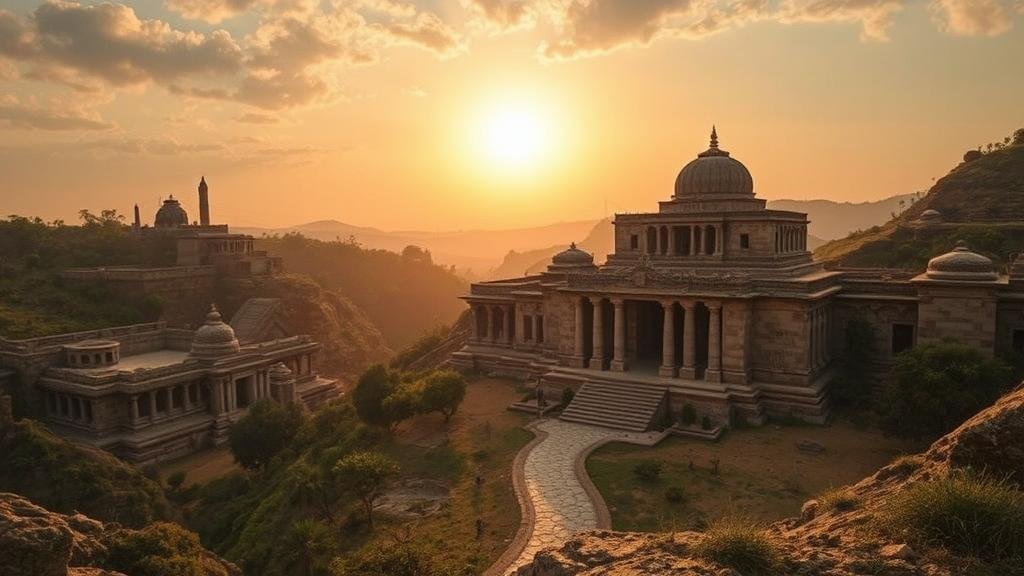Investigating the “Path of the Sun God,†an ancient trail connecting temples across continents.
Investigating the “Path of the Sun Godâ€
The “Path of the Sun God†is an ancient trail thought to connect various temples across continents, believed to have been created by cultures that revered the sun as a symbol of divinity and life. This network of spiritual and physical pathways reflects an intricate web of religious significance and communal bonding among early civilizations. The investigation into this trail not only sheds light on ancient belief systems but also illustrates the interconnectedness of human culture throughout history.
What is the “Path of the Sun God�
The term Path of the Sun God refers to a conceptual journey that links major sun worship sites from various eras and civilizations. e pathways are often thought to consist of temples, monuments, and sacred sites, all aligned with solar events such as solstices and equinoxes. The observation of the sun was crucial for agricultural practices, religious ceremonies, and navigation, making these connections deeply significant for ancient peoples.
Key Locations Along the Path
Several iconic sites are often associated with the Path of the Sun God, highlighting the geographical and cultural diversity of sun worship. Some notable locations include:
- Stonehenge (England): A prehistoric monument aligned with the summer solstice, Stonehenge exemplifies the reverence for the sun in Neolithic culture.
- Temple of Karnak (Egypt): This temple complex features a massive entrance aligned with the rising sun, showcasing the importance of solar worship in ancient Egyptian religion.
- Pyramids of Teotihuacan (Mexico): The Pyramid of the Sun is one of the largest structures in the ancient city, indicating the centrality of solar worship in the Mesoamerican worldview.
- Chichen Itza (Mexico): The El Castillo pyramid is renowned for its equinox display of shadow and light, symbolizing the connection to the sun.
- Palenque (Mexico): This ancient Mayan city includes temples that also align with solar events, further emphasizing the connection of sun worship across regions.
Historical Context and Significance
The path symbolizes the shared beliefs about the power of the sun, which transcended geographic and cultural barriers. For example, in ancient Egypt, Ra, the sun god, was not only a deity but a representation of kingship and divine authority. In contrast, the ancient Mayans viewed the sun as a cycle of life and death, intertwining agricultural practices with their religious calendars.
According to some scholars, the alignment of these sites demonstrates advanced astronomical knowledge. Recent research indicates that these civilizations used precise measurements for construction, aligning structures with solar events to optimize agricultural cycles and enhance communal cohesion.
Modern Interpretations and Investigations
Today, archaeologists and historians are utilizing modern technology to investigate these ancient paths. Techniques such as Geographic Information Systems (GIS) allow researchers to map ancient sites and analyze their alignments concerning solar phenomena. For example, in 2022, a study in the journal *Archaeological Science* presented findings that indicate a complex network of temple alignments in the American Southwest, further supporting the theory of interconnected sun worship practices.
Also, tourism has spurred interest in these ancient paths, such as the Initiative for the Sun Path, which promotes eco-tourism along historical routes connecting these significant sites. Such projects aim to blend education and preservation, allowing for a greater understanding of humanitys shared heritage.
Challenges and Future Directions
Despite significant interest, many challenges remain in the study and preservation of the Path of the Sun God. These include the deterioration of ancient sites due to natural erosion, urban expansion, and climate change. Plus, there is debate among scholars regarding the interpretation of alignments and their cultural significance, showcasing the need for multidisciplinary approaches in research.
Future studies will likely incorporate advanced imaging techniques and collaborative research across disciplines to deepen our understanding of this ancient trail. Applying knowledge from astronomy, archaeology, and anthropology could yield new insights into how ancient civilizations interacted with their environment and with one another.
Conclusion
The “Path of the Sun God†offers a fascinating lens through which to view the historical and cultural significance of sun worship. By investigating the connections between major temples across continents, we not only uncover the spiritual beliefs of ancient civilizations but also recognize the enduring influence of the sun in human culture. As research continues to evolve, the path may reveal even more about our ancestors relationships with the cosmos and each other.
As we engage with this rich tapestry of history, it is essential to preserve these sites and consider their cultural significance in todays global society. Whether through academic research or community-led initiatives, preserving the legacy of the Path of the Sun God ensures that future generations can appreciate this profound human story.


